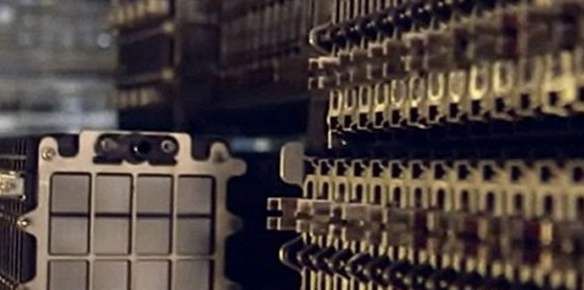How To Read A LiPo Battery-Explanation, Safety, Care
Nov 13, 2019 Pageview:1417
lithium polymer battery (LiPo Battery) is a form of batteries that is rechargeable. It is based on lithium-ion technology. It is manufactured using a polymer electrolyte instead of the conventional liquid electrolyte. The LiPo batteries provide higher specific energy than conventional lithium batteries. They are very lightweight, that is why they are used in products where weight is a crucial feature, such as mobile phones, or radio-controlled aircraft.
LiPo batteries follow the footsteps of its predecessors Lithium-ion and Lithium-metal cells. Since the 1980s, this field has undergone numerous researches. Until in the year 1991 when Sony released its first commercial cylindrical Li-ion cell. That was the starting point of the achievements that have been done in the field since.
LiPo batteries are used on a very large scale. They are used in RC devices, including boats, drones, helicopters, cars, and any other devices that require their battery to be lightweight. They are also used in many electronics devices especially smartphones.
Up until this moment, LiPo batteries have the largest market share of any batteries there is on market, and we can say that there is almost no tech company that does not use them in at least one of their products.
What do the numbers mean on a LiPo battery?
LiPo batteries are defined through a rating system. This system allows us to determine the properties of each LiPo battery and compare these properties to other batteries and decide what needs to be done. For any given LiPo battery, there are three main ratings that you need to know:
· Discharge Rating, which is represented by a number followed by the letter C.
· The Capacity, which is represented by a number followed by the letters mAh.
· The Cell count, which is represented by a number followed by the letter S.
· Voltage, which is represented by a number followed by the letter V.
Discharge Rating
The discharge rating represents the rate at which the LiPo battery can be safely discharged without harming the battery. Discharge rating is dependent on the capacity of the battery that is why it is represented by a number followed by the letter C, which stands for Capacity.
For example, let us say you have a LiPo battery that has a 5 Amps capacity. On the battery, it is written that the discharge rate is 50C. To calculate it you simply multiply 50 by the capacity which is 5, the result would be 250A. Therefore, 250A is the discharge rating for this battery.
The Capacity
In simple terms, capacity of a given LiPo battery is the measurement of how much power this battery can hold. The unit of measurement is mAh "milliamp-hours".
The Voltage and Cell Count
A single cell LiPo battery has a nominal voltage of 3.7V. When there is more than one cell inside a given LiPo battery, which means the voltage gets added together. For example, if we have two cells inside a LiPo battery that means the two cell pack is 7.4V, and if we have three cells inside, then the three cell pack is 11.1V and so on.
Safety of a LiPo battery
It is important to know that incorrect handling of the LiPo batteries may result in dangerous hazards and may cause a fire. There are some handling and charging safety rules that one must follow when dealing with LiPo batteries. These rules are:
· Never pick up a LiPo battery by its leads. The wires may be pulled off from the solder joints. Always pick it up by its body.
· When charging, charge at a fireproof location. The usage of LiPo safe bags is preferable.
· Never charge your battery immediately after usage, wait for it to cool down first.
· It is recommended that you charge your battery at a rate of 1C or less.
· Never leave your battery unattended when charging. Always check on it to make sure it is not getting warm or swelling.
· Never try to charge a damaged LiPo battery, doing so may cause fire or an explosion.
· Before charging, make sure that the number of cells and battery type match the numbers on your charger.
· Avoid overcharging the battery.
· Never leave your LiPo battery in the sun or in a hot car.
Care of a LiPo battery
Extending the life of a LiPo battery depends on how you treat the battery while charging. The charging behavior affects the characteristics of the LiPo batteries tremendously.
That is why it is important to take the following things into consideration when charging a LiPo battery:
Choosing a Charger
The First Step to decent charging a LiPo battery is the choice of the charger. Right now one of the best chargers on the market is the Dynamite Passport P1 Mini. It is a multi-chemistry charger that can charge NiMH, NiCd, and LiPo batteries. It has a built-in balancer and can charge up to six amps.
If you have a larger capacity battery and need to charge it, you would need a charger that can operate on higher wattages. To determine that refer to the equation Watt= Voltage x Amperage. Now by knowing these two quantities in your batteries, you would know the exact charger you have to buy.
Charging Type
The first thing you have to know about this is that for a LiPo battery Parallel charging can be extremely dangerous. Experts consider parallel charging an extremely dangerous chore that should not be considered even by experienced users. The problem with parallel charging is that when you hook up your batteries in parallel, you are basically doubling the capacity of these batteries, while at the same time you maintain the voltage of one of the individual batteries. All of that means is that your charger cannot see all the batteries instead it only sees one.
Also, there are two identical batteries on market. For batteries to be safe during parallel charging they must be identical, which means that the batteries and the cells within them must be from the exact same production lot, with the same chemical composition, age, and the charge history, which is impossible to achieve in day to day life.
Series charging is the safe way to go. If you want to charge a number of LiPo batteries that, have the same capacity. You can wire them up in series, setup your charger for the added number of total cells in the setup, and balance charge the batteries. Balancing here is a mandatory step because it makes the charger individually charge each cell, making sure that they are all kept at safe levels.
For multiple batteries, the best way to charge them is by having a multi-port charger. So, in case you want to charge multiple batteries, it is the safest thing to do is to purchase a charger that fits your needs.
- Prev Article: Lithium-ion Battery Fire Extinguisher Discussion
- Next Article: Lithium Battery Explosion Reason
Leave Message
Hottest Categories
-
Hottest Industry News
-
Latest Industry News











